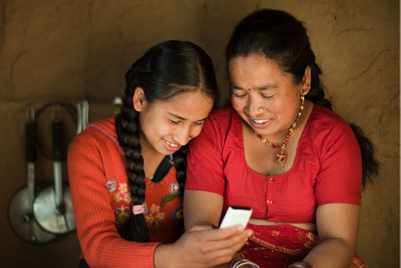
This is the month of Shraavana, which generally falls between16 July and 15 August. Shraavana symbolizes the beginning of the festive season in Nepal, and festivals are the most important time in the marketing calendar if you want to influence the purchase decisions of typical Nepalese consumers.
Festivals are a time when everyone gets down to shopping in Nepal. It is a time to spend loads of money without feeling guilty because it has always been part of the culture. Brands and marketers become hyperactive to grab the attention of their consumers.
With Dashain, Tihar and Chhath Parwa on the way in September and October, August becomes the busiest time of the year for both advertisers and agency folks. Most brands try to be as innovative and creative as possible during the period to lure shoppers. The majority of consumer durables and the automobile sectors claim almost 50 per cent of their annual sales during these two months of festivities.
Hence it is always important for both the agency counterparts and marketers to mark down these these important dates in their marketing calendar so logistically they are prepared for this big sales time. It also challenges creative folk and planners to produce innovative ideas that resonate with the very specific values that these holidays represent. Only by doing so they can create the deeper associations that align audiences with the brand and drive decision-making in favour of their brands.
Dashain is a critical period for the advertisers across Nepal. The festival symbolizes the victory of good over evil. It is the longest festival in the Nepalese calendar with banks, corporate and government offices shutting down during this period. It also represent families coming together to celebrate the occasion. This is also a time when government employees and larger organisations dish out bonuses to their workers so that they can also have a higher disposable household income to spend during the festivities. Nepal also has a high proportion of migrant workers in the Middle East and Southeast Asian countries, and they generally return home to visit their families during this period with their foreign-earned income, which helps to boost the household disposable income for lower middle class and solely agriculture-based families.
Understanding this context, brands compete for their own version of double prosperity: a share of increased spending and longer-term consumer involvement that can extend the benefits of a holiday campaign throughout the year.
Most consumers like to buy during the festival season for various reasons to celebrate, and because many of them also consider this to be an auspicious occasion. For example: buying an LCD television is still a celebration for most middle class families in Nepal. The whole family joins in the excitement to watch TV programmes together. It’s a matter of pride, and certainly people also get their festival bonuses, which they would like to invest on some aspirational products.
Through innovative festival campaigns, brands can move closer to the Nepalese consumers and can maximize their brand pull. People also wait for the festival season to get the best deals. Competition compels brands to offer their best deals during this period. Those who fail to do so will lose out on capturing the consideration of the larger middle-class families who set out make their important purchases during this time.
During this time, most families also take the festival season as a time for upgrading or renewing household items and therefore, many consumer durables focus on the upper range of television sets, upholstery and curtains etc, as people look to upgrade their home spaces.
The spirit of festivals is the same across Nepal. Dashain and Chhath Parwa are celebrated in the Terai region and in the agricultural plains of Nepal bordering India.
Mha Puja, also a Newari New Year function, takes place during the Tihar holidays and is celebrated more by the Newari community across Nepal. A few brands also take these celebrations into consideration to create deeper connections in those regions.
Ujaya Shakya is managing director of Outreach Nepal




.jpg&h=334&w=500&q=100&v=20250320&c=1)
.jpg&h=334&w=500&q=100&v=20250320&c=1)
.jpg&h=334&w=500&q=100&v=20250320&c=1)
.jpg&h=334&w=500&q=100&v=20250320&c=1)

.jpg&h=334&w=500&q=100&v=20250320&c=1)






.jpg&h=268&w=401&q=100&v=20250320&c=1)


